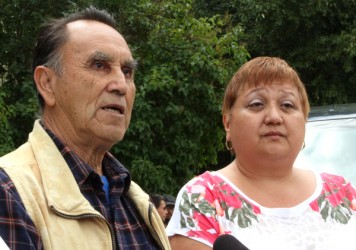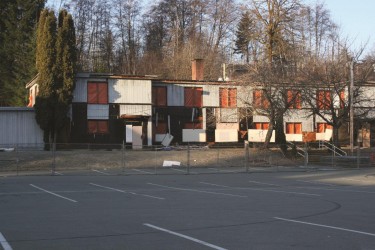Article Origin
Volume
Issue
Year
The Tseshaht First Nation has responded with “horror and disgust” to the recent revelation that children of the Alberni Indian Residential School (AIRS) were used for illegal and immoral nutritional experiments in the 1940s and ‘50s.
The experiments were conducted by the Canadian government and researchers with the Canadian Red Cross, said Tseshaht Chief Councillor Hugh Braker.
Researcher Ian Mosby with the University of Guelph, whose work focuses on the history of food in Canada, has uncovered that between 1942 and 1952 leading experts in nutrition conducted studies on Aboriginal communities and residential schools.
Many of their test subjects were children, who were denied food and health care treatment in order to study the effects of malnutrition.
Among the communities studied were Attawapiskat in Ontario, The Pas in Manitoba, as well as six residential schools, AIRS among them. AIRS was located on the Tseshaht reserve outside of Port Alberni on Vancouver Island.
“At Alberni, early investigations found not only an inexperienced staff and out-of-date, run-down kitchen facilities, but that the diets of children were lacking in vitamins A, B and C and iodine because they were not being provided with enough foods like milk, fruit, vegetables, eggs, cheese and iodized salt,” reads Mosby’s article “Administering Colonial Science” published in May in the Histoire sociale/Social history journal.
But instead of improving the quality of the diet in the school—as were the urgings of First Nations leaders to the researchers —it was decided to conduct experiments on the already deprived children.
“Alberni had the highest incidence of riboflavin deficiency of all the experimental schools,” so it was decided to “test the effects of tripling the children’s milk consumption from its existing serving of eight ounces per day,” less than half of the 24 ounces recommended in Canada’s Food Rules, reads the report.
But first the researchers needed a baseline so the results of the increased milk intake could be assessed. So the eight ounce ration was maintained for two years. (Braker said there is no evidence, however, that that ration was ever increased.)
Researchers also denied the students dental treatments, including the use of sodium floride, dental prophylaxis or urea compounds.
“[W]hen researchers learned that Indian Health Services had visited the Alberni (school)… in the early years of the study, the research team quickly sent off telegrams and letters insisting that, for the duration of the study, ‘no specialized, over-all type of dental services should be provided [to the students],” reads the article.
Dental caries and gingivitis were “important factors in assessing nutritional status”. Interventions would interfere with study results.
Braker said he was “horrified by the disclosure”. He said the students of AIRS were innocent children that had already been victimized by being yanked from their parents’ care and the Canadian government, through this research, re-victimized them.
And, to add insult to injury, said Braker, the students were made to write letters of thanks to the researchers at the end of their work.
Braker said there are four things that need to happen now.
1. Apologize to the victims.
2. Compensate the people.
3.Disclose all illegal experimentation done on the children.
4. Fund research on the effects of the nutritional experimentation.
Braker said the 2008 apology Prime Minister Stephen Harper gave in the House of Commons does not cover these new revelations. Canada has never disclosed this information.
“What else are they hiding,” he asked.
Braker said the health issues caused by the experimentation now needs to be known in full. People lost their teeth from the lack of nutrition in the schools and the lack of dental treatment; there are chronic diseases that could be linked back to the diet of the children.
Debra Foxcroft is an elected council member for the Tseshaht Nation. She is a former assistant deputy minister in the Child and Family Services department of the BC government. She is the daughter of an AIRS student who attended during the time of the nutritional experimentation.
“I’m appalled and angry today,” she told reporters at a news conference held outside one of the remaining buildings of the AIRS compound. She said her father never talked very much about his residential school experience, except to say that the pigs and cows ate better than the students. He called the school a prison.
“Today is upsetting to me. I’m angry that my father and other family were used as guinea pigs.”
Benson Nookemus attended AIRS during the experimentation. He began there in 1942 at the age of six-and-a-half and stayed five years. He remembers having porridge seven days a week for breakfast and an old stale piece of bread for a mid-afternoon snack. What he had for lunch and supper he can’t remember, he said.
“We were always hungry.”
Nookemus said the school was surrounded by a fence that some of the students would crawl under at night when they could to get to a relative’s home for some food. He pointed to an area that used to be a garden where the school would grow carrots and potatoes and, when the students could manage it undetected, they would grab the root vegetables to eat raw.
“We had no choice, because we were so hungry.”
He said it seemed like the students were always sick. Nookemus was glad to eventually go home where he could return to the salmon and shellfish diet his Huu-ay-aht people lived on.
Foxcroft said “If these children were at home they would have eaten better.”
Braker said the experimentation sprang from “boldfaced racism.” He intends to raise the issue at a United Nations forum on racism in August. He said whatever the experiments were for, they were not for the benefit of Aboriginal people.
“These Canadian driven experiments join a host of unethical scientific research on human subjects, from Tuskegee Syphilis Experiments in the United States, to Nazi medical experiments in concentration camps. The intentions of the experiments were to serve the political and professional interests of the colonial regime at the expense of Indigenous children’s wellbeing,” reads a summary of Mosby’s article prepared for the Tseshaht Nation.
“This shocking treatment cannot be swept under the rug or ignored,” said Braker. “We need to understand exactly what happened, who knew about it, who authorized it and what the effects were.”
Braker also called on the Canadian Red Cross to come clean about its role in the illegal experiments.
Photo captions:
Benson Nookemus and Debra Foxcroft address the media about the nutritional experimentation done on students of Alberni Indian Residential School.
The dormitory at Alberni Indian Residential School that housed the kitchen where students' meals were prepared. Peake Hall, as it was called, was demolished in 2007. Former students were invited to dismantle parts of the building in an effort to provide the former students some closure.
- 18643 views


